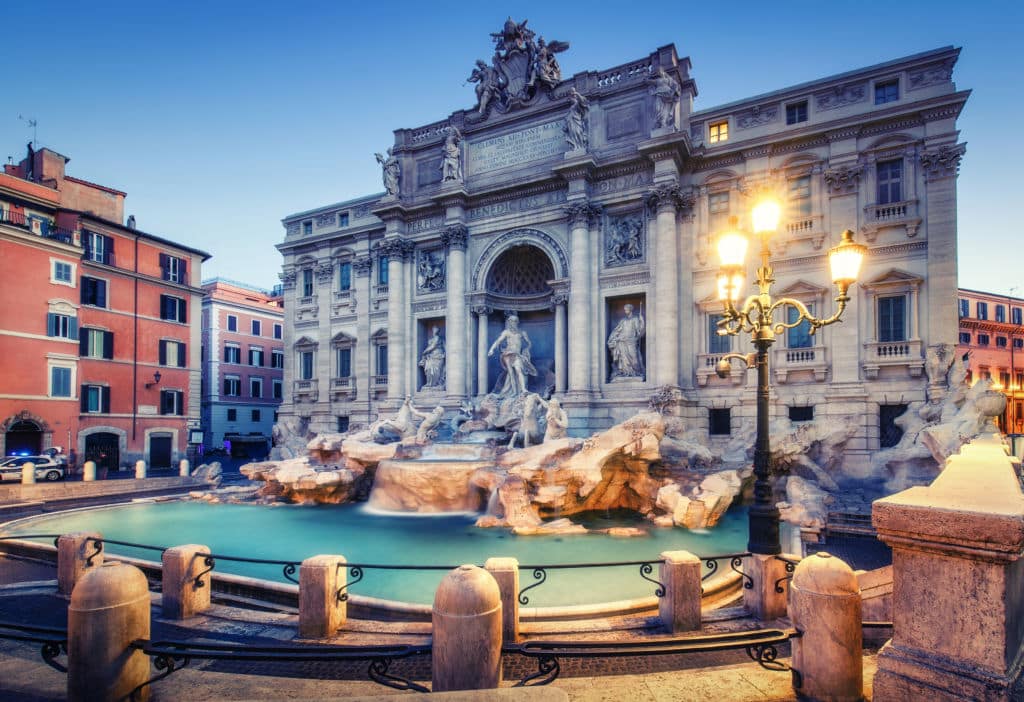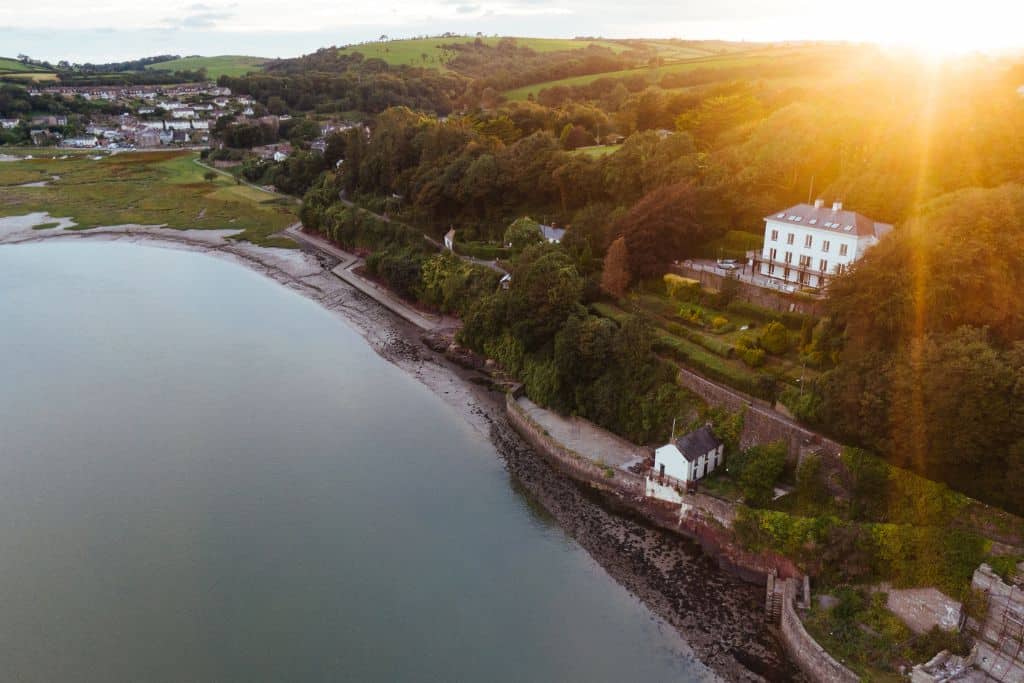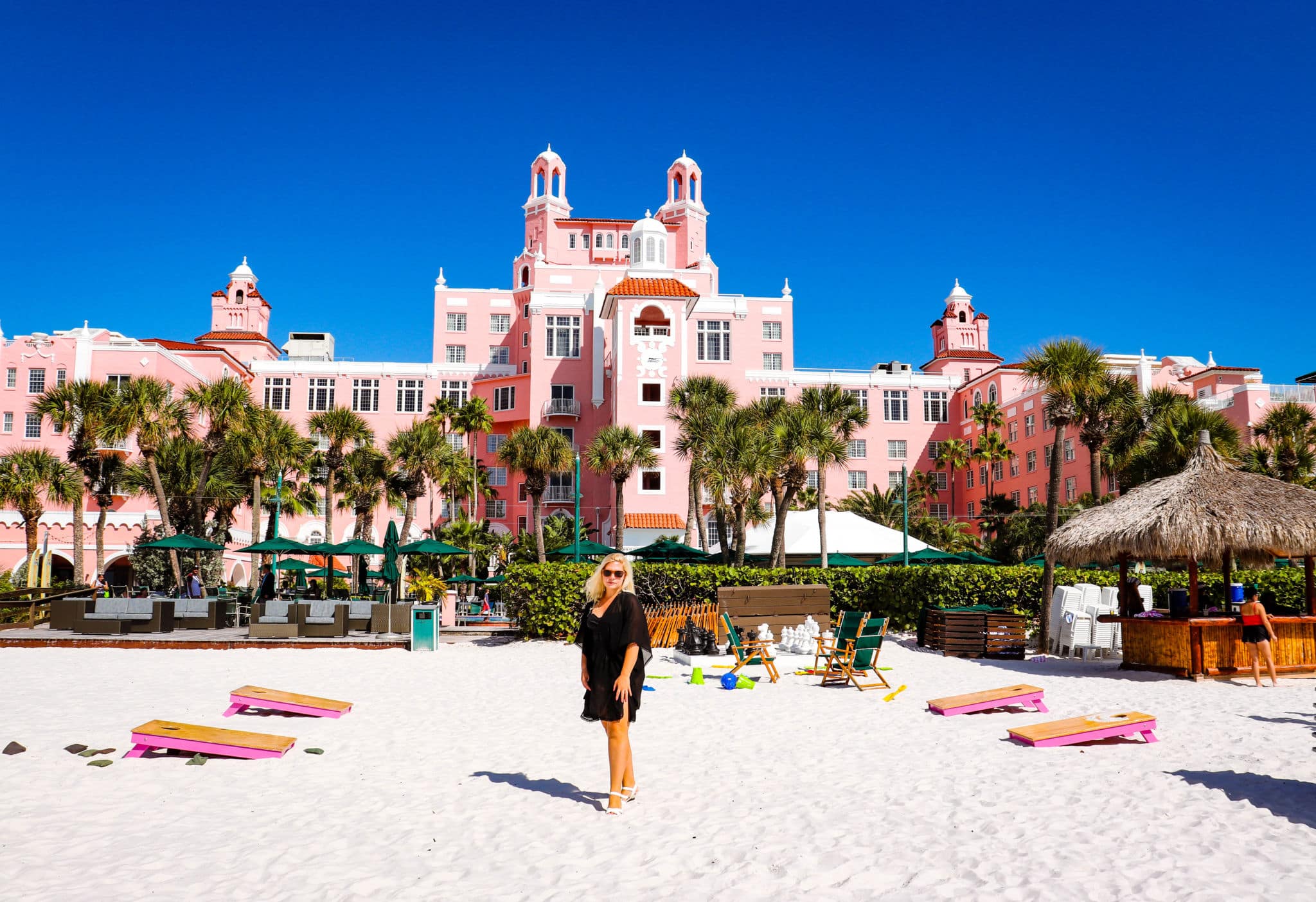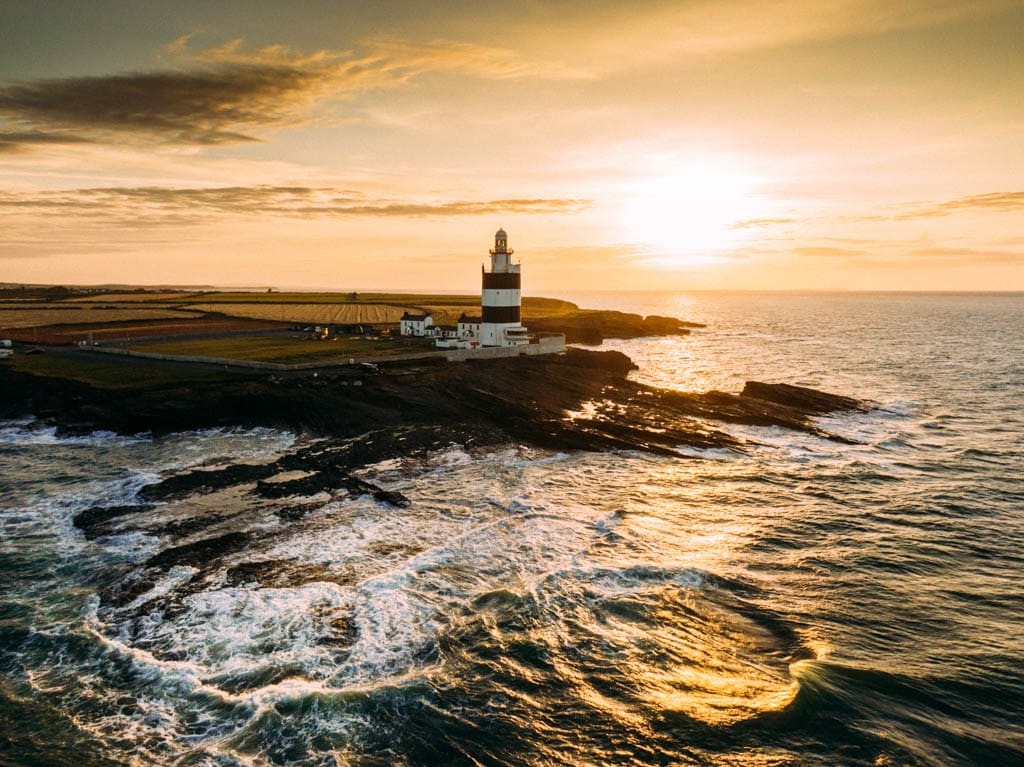Best things to do in Istria Croatia: Ultimate Guide for 2024
Disclosure: This post may contain affiliate links, which means we may receive a commission if you click a link and purchase something. Please check out our disclosure policy for more details.
Are you planning to visit Istria in Croatia? This charming Croatian peninsula has colourful towns, Roman ruins, foodie finds, and sparkling blue seas.
There are so many fun things to do in Istria, Croatia, so you’ll need my bumper guide to help you plan your dream trip.
Discover the region’s alluring blend of pristine beaches, ancient history, culinary delights, and vivacious outdoor activities.
Whether you’re an adventurer seeking thrilling explorations, a history aficionado, or a food lover looking for a taste of the Mediterranean, Istria is your perfect European holiday this year!
Best things to do in Istria Croatia

Across this diverse Croatian region are colourful, cobblestone towns, rocky beaches and Roman ruins. There are also plenty of activities in Istria to keep you busy on vacation.
I recommend spending at least one week in Istria to make the most of your time there. Make sure to visit the popular seaside towns of Rovinj, Porec and Pula for some ‘vitamin sea’.
One of the highlights of Istria is its rich historical heritage. Explore the ancient Roman ruins in Pula, including the well-preserved Pula Arena, a magnificent Roman amphitheatre that serves as a cultural venue for concerts and events.
Istria travel guide

Istria’s coastline also features beautiful beaches and crystal-clear waters. Spend a day soaking up the sun on the pebbly shores of Poreč or discover hidden coves along the rocky coastline.
The coastal town of Rovinj offers beaches and a charming Old Town with narrow streets, colourful buildings, and St. Euphemia’s Basilica.
Venture into the region’s interior and explore the hilltop towns that dot the Istrian landscape. Grožnjan, Motovun, and Buzet are known for their medieval architecture, scenic views, and lively cultural scene.
what to do in istria

Where is Istria Croatia?
Istria is a peninsula located in the northwestern part of Croatia. It is the largest peninsula in the Adriatic Sea. The Gulf of Trieste borders it to the north, the Kvarner Gulf to the east, and the Adriatic Sea to the west.
Istria is geographically shared between three countries: Croatia, Slovenia, and a small portion belonging to Italy.

Most of Istria is part of Croatia, specifically Istria County, which includes popular cities and towns such as Pula, Rovinj, and Poreč.
This region is known for its pristine coastline, picturesque villages, historic sites, and cuisine. Istria is a popular tourist destination, attracting visitors with its diverse landscapes, rich cultural heritage, and harmonious blend of Mediterranean and Central European influences.
Planning your Istria Croatia holiday

A holiday in Istria will require some travel planning. I would list the places you want to visit and consider what attractions and tours you want to book.
Check out my travel planning service if you need help planning a Croatian holiday. Let a travel expert assist with creating an awesome holiday itinerary.
We discuss travel planning on my weekly travel podcast, Travel Goals. Subscribe now to catch up on all episodes.
Visit Rovinj in Istria

Rovinj, Croatia, is a picturesque coastal town on the Istrian Peninsula – known for its charming cobblestone streets, colourful buildings, and natural beauty. It’s a popular destination for travellers seeking a mix of history, culture, and relaxation in Europe.
One of the highlights of Rovinj is its well-preserved Old Town, which is perched on a small peninsula and surrounded by the Adriatic Sea.
Rovinj old town

The narrow, winding streets of the Old Town are lined with traditional houses, boutique shops, art galleries, and local restaurants.
Stroll through the labyrinth of the streets, discover hidden squares, and marvel at the historic architecture.
Don’t miss the opportunity to visit the iconic St. Euphemia’s Basilica, which stands atop a hill and offers panoramic views of the town and the coastline from its bell tower.
Things to do in Rovinj Croatia

Some of the best things to do in Rovinj include:
- Taking a taxi boat to the ‘Red Island’ [Crveni otok]. Here, you can soak up some sun on pretty stone beaches
- Have a guided walking tour of Old Town Rovinj and learn about the town’s history
- Take a boat to Brijuni National Park, a picturesque group of 14 islands of natural beauty and cultural and historical heritage.
- Have dinner overlooking the sea at Restaurant & Wine bar Puntulina.
- Visit Istrian wineries and spend a day sipping delicious local wine


Discover Istria beaches

The Istria region in Croatia is blessed with a dramatic coastline dotted with picturesque beaches. From sandy shores to pebbly coves, the beaches in Istria offer diverse landscapes and a selection of water sports.
One of the most popular beaches in Istria is Zlatni Rat in Rovinj. This sandy beach is known for its unique shape, stretching out into the crystal-clear waters of the Adriatic Sea.
Zlatni Rat is a paradise for sunbathers and water sports enthusiasts, surrounded by lush pine forests. The beach offers various amenities, including beach bars, restaurants, and water sports equipment rental.
Poreč, another popular destination in Istria, is home to several beautiful beaches. The Blue Flag beach at Plava Laguna is popular among families due to its shallow waters and well-maintained facilities.
The town of Rabac is known for its gorgeous pebble beaches, such as Girandella and Maslinica. Surrounded by lush greenery and framed by dramatic cliffs, these beaches offer a tranquil retreat for sunbathers and swimmers.
Best beaches in Istria

The stone beaches in Istria vary from small coves to pebble beaches and large stone plateaus.
If there is a small rocky outcrop, you can guarantee that some metal steps will be attached to turn it into a swimming hole.
Some beaches are attached to hotel complexes and will have many facilities, including sun loungers, parasols, toilets, kayak hire and cafes.
The best beaches are mainly along the west coast of Istria. The sandy strand of Bijeca is probably the most child-friendly beach in Istria.
This beach is located on the southern coast at Medulin, around 10km south of Pula.
Istria for families

Some of the best beaches in Istria include:
- St. Andrew’s Island
- Histria
- Sipar
- Valdaliso
- Boric
Istrian wine tasting

Croatia, particularly the Istria region, is renowned for its rich wine-making traditions and produces a wide variety of exceptional wines.
Istria’s favourable climate, fertile soil, and long-standing history of winemaking make it an ideal region for viticulture.
The Istrian Peninsula is characterized by diverse microclimates, with a mix of warm coastal areas and cooler inland regions.
This variation in climate and the unique soil composition contribute to the distinct flavours and characteristics of Istrian wines.
Malvazija (Malvasia) is a notable grape variety grown in Istria. Malvazija Istarska is a white grape that thrives in the region’s warm climate and produces wines with a vibrant golden hue, fruity aromas, and crisp acidity.
Istria wine tour

Istria has many boutique wineries and is developing a tourism niche based on local wine production.
Book a wine-tasting, pairing experience, or wine tour to learn about Istria’s wine production.
Book the Istrian Wine Express Tour to learn more about Croatian wine and get the inside scoop on Istrian wine.
On this small-group wine tour, your driver picks you up at the designated pick-up points. Then, you start your wine adventure and visit at least two important wineries in Istria.
Visit the medieval town of Motovun

Motovun, located in the heart of the Istrian Peninsula, is a historic hilltop town
This medieval gem is perched on a hill, overlooking the surrounding vineyards and valleys, making it a popular destination for travellers.
Upon arriving in Motovun, its picturesque setting is among the first to strike visitors. The town is surrounded by lush green hills and vineyards, creating a beautiful backdrop for travel snaps.
As you make your way up the winding cobblestone streets, you’ll be greeted with charming stone houses, medieval walls, and hidden corners waiting to be discovered.
Motovun Istria history

he town’s origins can be traced back to ancient times, with evidence of human settlements in the area dating back to prehistoric periods.
Over the centuries, Motovun has witnessed the rise and fall of various civilizations, each leaving its mark on the town’s cultural heritage.
The imposing town walls, built in the 14th century and encircling the entire town, provide a glimpse into its medieval heritage.
Take a leisurely walk along the walls and soak in the panoramic views of the surrounding countryside, including the Mirna River Valley and the neighbouring hilltop villages.
One of the main attractions in Motovun is the 13th-century Romanesque-Gothic bell tower that dominates the town’s skyline.
Climbing to the top of the tower rewards visitors with glorious views of the Istrian countryside, making it a must-visit spot for photographers and nature lovers alike.
Motovun medieval walls

You can have a pleasant afternoon wandering around the shops selling local produce and sipping wine in rustic restaurants.
If you are interested in history and snapping scenic views, make sure to take a tour of the Motovun medieval walls.
You can also buy lots of local produce in Motovun, including olive oil, wine and truffles.
Book a Motovun tour

You can visit Motovun on a day trip from Pula when you book a tour to Motovun with Truffle and Local Brandies Tasting.
With a knowledgeable guide and all transportation provided, visit Motovun for hilltop views and truffle-tasting.
On this fun tour, you’ll head to a distillery perched on the banks of the River Mirna to learn the traditional methods for making jams, cookies, and chocolate made with herbs from the surrounding mountains.
See Roman ruins at the Pula Arena Istria

The Pula Arena is one of the many Roman relics that can be found in Istria.
This magnificent amphitheatre is the only remaining Roman amphitheatre with four side towers and all three Roman architectural orders entirely preserved.
Pula Arena, located in the Istrian city of Pula, Croatia, is an awe-inspiring Roman amphitheatre that is a testament to the region’s rich historical heritage.
Also known as the Pula Colosseum, this magnificent structure is one of the world’s most well-preserved ancient Roman amphitheatres and a significant landmark in Istria.
Pula Arena history

Built in the 1st century AD during the reign of Emperor Vespasian, the Pula Arena was primarily used for gladiatorial contests, as well as other spectacles and public events.
Constructed with local limestone, the elliptical amphitheatre has a seating capacity of approximately 23,000 spectators, making it one of the largest Roman amphitheatres of its kind.
The outer walls of the arena rise to a height of 32 meters, creating a grand and imposing presence in the city.
Today, Pula Arena is a fascinating historical site that offers visitors a glimpse into the ancient Roman era.
As you enter the historic arena, you can explore the various levels and corridors that once buzzed with excitement during the gladiatorial games.
Pula Amphitheatre tickets

You can visit the Pula Amphitheatre with a prepaid ticket when you book a Pula Amphitheatre ticket.
Tickets start at around £9-10 online and are valid anytime during the amphitheatre’s opening hours.
See an amphitheatre that has become the symbol of Pula, one of Croatia’s most popular and beautiful venues for events, like concerts, festivals, and even recreation of gladiatorial tournaments in the summer months.
Access the permanent exhibition entitled “Istrian Olive and Viticulture in Antiquity” in the underground area used by the gladiators during their tournaments.
Visit Brijuni National Park

Any trip to the Istria region must include a trip to the picturesque Brijuni Islands.
These are a group of fourteen small islands that make up the national park and are located in the Croatian part of the northern Adriatic Sea.
The islands are covered with pretty parklands, forests and meadows. You can look out for local wildlife and even go on a small safari here!
The entrance fee to Brijuni was free, but now you must visit the islands as part of a tour or official excursion.
Brijuni National Park ferry
You have to get a boat to the Brijuni National Park from the small town of Fažana. Getting to Fažana is easy; you can take the local bus from Pula.

When you arrive in Fažana, you can buy ferry tickets from the ticket office in Fažana or book a Brijuni National Park tour online.
The benefit of booking a tour is that you can learn more about the park’s history and wildlife from a professional guide.
Electric Cars Veli Brijun

The best way to explore the islands is by electric car. There’s nothing like rocking around over bumpy roads in a golf cart.
Try to maintain control of the vehicle if possible. You do not want to feel the indignity of driving into a lake as a dopey tourist. We were distracted by peacocks when driving and almost drove into a ditch.
If you aren’t keen on driving around, rent push bikes to see the island.
Brijuni National Park Safari

While visiting Brijuni National Park, you can jump on the land train and take a unique safari.
The safari park has a slightly bewildering history as the Brijuni National Park was once the summer residence of the former president of Yugoslavia, Josip Broz Tito.
Tito received guests from all around the world to this residence, and they would bring lavish gifts, one of which included an elephant.
Today, you can still see some animals on the land train, including zebras and ostriches.

Go olive oil tasting
Olive oil is one of the high-quality local products you can taste and buy in Istria. Book a tasting session at the Chiavalon estate and sample some incredible Chiavalon olive oil.

Here, you can learn how to taste and identify good-quality olive oil properly. Properly tasting olive oil involves a weird slurping action, which makes for a hilarious selfie.
You can also learn more about the history of the family and the estate during a tasting.
Staff will also explain in detail the process for manufacturing olive oil and what it takes to make a bona fide high-quality extra virgin olive oil in gorgeous surroundings.

Olive Oil Tasting Tour
You can also book an Olive Oil Guided Tasting and History tour in Pula and sample local oils and produce.
Learn about the history of olive oil making in Croatia, from Roman times, when oils made here were highly prized, to the modern day, and taste different types of local olive oils to see the difference in taste and quality.
Visit the historic town of Porec
Poreč is a pretty coastal town on the western coast of Istria, Croatia. Known for its rich history, stunning architecture, and beautiful beaches, Poreč is really popular with tourists visiting the region.
One of the main attractions in Poreč is the Euphrasian Basilica, a UNESCO World Heritage Site. This sixth-century Byzantine basilica is renowned for its stunning mosaics depicting religious scenes and intricate patterns.
The complex also includes a baptistery, a bell tower, and an early Christian complex, providing a glimpse into Poreč’s ancient past.

Things to do in Poreč Croatia
Take a stroll through the town and discover architectural gems such as the Romanesque, Gothic, and Venetian Houses.

Exploring the historic centre of Poreč is like stepping back in time. The town’s narrow, cobblestone streets have well-preserved medieval buildings, charming squares, and picturesque alleys.
You could spend hours wandering around the pedestrianised old town of Poreč.
Here, you’ll find the 2,000-year-old stone-paved thoroughfare [known as The Decumanus], full of tacky gift shops, cafes and ice cream shops.
Some of the best things to do in Poreč include:
- Explore the Euphrasian Basilica: Visit the UNESCO World Heritage Site of the Euphrasian Basilica, a magnificent Byzantine basilica known for its intricate mosaics
- Wander through the Old Town: Take a stroll through Poreč’s historic centre and soak in the atmosphere of its narrow, cobbled streets.
- Relax on Poreč’s beaches: Sunbathe and swim on popular beaches – Plava Laguna, Zelena Laguna, and Brulo Beach.
- Discover the Baredine Cave: Embark on an underground adventure by visiting the Baredine Cave, just a short drive from Poreč.
- Try water sports and activities: Poreč offers a range of water sports, including snorkelling, diving, jet skiing, paddleboarding
- Visit the Marafor Square: Step into history at Marafor Square, the site of the ancient Roman forum.

Go swimming at the Red Island
Soak up some sun and swim in the aqua blue waters off the ‘Red Island’ shore.
This area actually consists of two artificially connected islands: St. Andrew’s Island (Otok Sv. Andrije) and Maškin Island (Otok Maškin).

Island Hotel Istra
The Sun-drenched Red Island is only a fifteen-minute sail away from Rovinj.
Taxi boats depart for Red Island every hour from a small pier on the main town square and from Delfin Pier.
The waters are crystal clear on the small pebble beaches and are ideal for snorkelling and swimming. You can also rent kayaks or splash about on a giant inflatable.

You can actually stay on this tiny, car-free island at the luxurious Island Hotel Istra.
This super stylish hotel has outdoor pools, sun loungers and a wellness spa. It is uber relaxing and inviting.
Go Truffle hunting in Istria
Did you know there are truffles in Croatia? You can go on a truffle-hunting adventure in Istria at the family-run ‘Karlic Tartufi.’
The third generation of the Karlić family will take you truffle hunting in Istria with adorable truffle hunting dogs.
It’s definitely one of the most fun things to do in Istria, Croatia, especially if you love puppies.

Truffle hunting tour
A Truffle is an underground tuberous fungus. While that sounds a tad gross, truffles are actually a gastronomic delight. Specially trained truffle hunting dogs can locate this underground foodie treasure.
You can find truffles on a Truffle hunting & cooking tour in the Croatian forest and discover Croatia’s truffle-hunting traditions first-hand.
Meet your guide in the village of Paladini, and head out accompanied by truffle dogs searching for valuable truffles.
After your truffle gathering experience, return to enjoy a 3-course meal—plus drinks—prepared with a generous quantity of local truffles.

Where to stay in Istria
There is a huge selection of hotels and guesthouses in Istria. You will be spoiled for choice in the tourist towns of Pula, Poreč and Rovinj.
Camping is often a popular choice, with several large, well-equipped sites in the Istria region.

Park Plaza Histria, Pula
I stayed in the luxurious Park Plaza Histria, located on the Verudela peninsular, around 4km south of Pula.
This 368-room hotel has many facilities, including access to a pebble beach, wellness centre and outdoor pools.
A pretty waterfront promenade runs behind the hotel, which is perfect for a stroll to the beach.

Park Plaza Histria Rooms & Suites
The Park Plaza Histria Pula has 368 superior, premium rooms and stunning suites offering sea views.
Typical room amenities include:
- Free WiFi
- LCD TVs
- Air conditioning
- Ensuite bathroom
Park Plaza Histria Restaurants & Bars
The hotel has several options, including a lobby, a piano bar, and fine dining in the Taverna.
The Yacht Restaurant & Lounge Bar serves a range of drinks on the multi-level terrace, and refreshments are also available from the pool bar and Luna’s Lounge Bar.

Getting around Istria
If you want to rent a car in Istria, it’s easy to drive from Pula to the coastal towns up the west coast or inland as far as Pazin.
You can get around the Istria region by bus. The Istria Bus Services along the coast are quite regular.
Be aware that some of the inland towns, such as Motovun, are less well-served by buses. This is when car hire starts looking like a good option in Croatia.
Rail travel in Istria is limited as the only railway line links the town of Pula with Pazin and continues north into Slovenia.
You can also take ferry services in Istria, which are perfect for day trips or onward travel to Venice.
Getting to Istria

The only airport in Istria is Pula Airport and you can fly direct to Pula with Jet2 Holidays. You can search their site for the best flights and holiday deals.
One of the main advantages of booking with Jet2 Holidays is its convenience and peace of mind.
The company takes care of all the essential elements of your holiday, including flights, accommodation, transfers, and even baggage allowance, ensuring a hassle-free experience for travellers.
This allows you to relax and enjoy your vacation without worrying about the logistical details.
package holidays to istria

Have you been inspired to visit Istria in Croatia? There are so many reasons to book a holiday to Istria.
From pretty coastal towns to incredible Istrian cuisine to historic hilltop towns. There are so many things to do in Istria that you could spend two weeks here and still not see everything.
Late summer and Autumn are really the ideal times to visit Istria, as you’ll avoid peak-season prices and crowds.
Are you planning a trip to Croatia? Where are you planning on visiting? Let me know in the comments below.
Istria Croatia Travel Tips

- Currency:
- As of 1 January 2023, the official currency used in Croatia is the euro (EUR), the only official means of payment in Croatia, which replaced the previously used kuna.
- Weather:
- Istria experiences a Mediterranean climate, with hot, dry summers and mild, wet winters. Summers (June to August) are the peak tourist season, with temperatures ranging from 25°C to 35°C (77°F to 95°F). Winters (December to February) are milder, with temperatures around 5°C to 10°C (41°F to 50°F).
- Safety:
- Istria is generally a safe destination for tourists. However, exercise normal precautions against petty theft and pickpocketing, especially in crowded tourist areas.
- What to Pack:
- Light, breathable clothing for summer months.
- Sunscreen, sunglasses, and a hat to protect against the strong sun.
- Comfortable walking shoes for exploring historical sites and cobblestone streets.
- A light jacket or sweater for cooler evenings, especially during spring and autumn.
- Getting Around:
- Istria has a well-developed transportation network, including buses, ferries, and taxis.
- Renting a car is a convenient option for exploring the region, especially if you want to visit remote villages and scenic spots.
- Cycling is popular in Istria, with numerous bike rental shops and well-marked cycling routes.
- Visa Requirements for the UK and USA:
- UK citizens do not need a visa for short tourism visits (up to 90 days) to Croatia.
- US citizens can also visit Croatia for tourism purposes without a visa for up to 90 days within 180 days.
- Language:
- The official language is Croatian, but English is widely spoken, especially in tourist areas.
- Local Cuisine:
- Try local specialities such as Istrian truffles, seafood, olive oil, and regional wines.
- Tipping is appreciated but not mandatory; 10% is customary in restaurants if the service charge is not included.
- Health and Safety:
- Ensure you have comprehensive travel insurance covering medical expenses and emergency evacuation.
- Tap water is generally safe to drink, but bottled water is readily available if preferred.
Istria Croatia fAQ

Q: Where is Istria located in Croatia?
Istria is a heart-shaped peninsula in the northwestern part of Croatia, bordering Slovenia. It is the largest peninsula in the Adriatic Sea.
Q. Is Istria part of Italy or Croatia?
Istria is a peninsula in southeastern Europe. It is part of two countries: Croatia and Slovenia. The majority of Istria is in Croatia, forming the Istrian County, one of the 21 counties of Croatia. However, a small portion of Istria, known as Slovenian Istria, is part of Slovenia.
Q: What is Istria known for?
Istria is renowned for its stunning coastline, historical towns, gourmet food and wine, and diverse cultural heritage. It’s also famous for truffles and olive oil and is a top destination for cycling and sailing.
Q3: What are the must-visit places in Istria?
Some must-visit places in Istria include the ancient towns of Rovinj, Pula, and Motovun, the Brijuni National Park, and Kamenjak National Park. The region is also known for its beautiful beaches and vineyards.
Q: What is the best time of year to visit Istria?
The best time to visit Istria depends on what you want to do. Summer (June to August) offers warm temperatures and sunny days for beachgoers and sun lovers. For those interested in exploring the towns and countryside, spring (April to June) and fall (September to October) provide pleasant weather and fewer crowds.
Q: What food should I try in Istria?
Istria is famous for its truffles, so trying a truffle-infused dish is essential. Other local specialities include seafood, Istrian ham, sheep cheese, and olive oil. Don’t forget to taste some local wines like Malvasia and Teran.
Q: How can I get around Istria?
The most convenient way to get around Istria is by car, allowing you to explore at your own pace. Public transportation is available but may not cover all tourist spots. Biking is also popular in Istria, with numerous bike trails available.
Q7: Is Istria a good family vacation destination?
Yes, Istria is a great destination for families. It offers a variety of activities suitable for all ages, including beach outings, visits to dinosaur parks, exploring caves, and water sports.
Q: What languages are spoken in Istria?
While Croatian is the official language, Italian is widely spoken due to Istria’s historical ties with Italy. Many locals also speak English, especially in tourist areas.
Q: Is it safe to travel to Istria?
Yes, Istria is generally considered safe for travellers. As always, it is important to stay aware of your surroundings and follow any local advice or regulations.
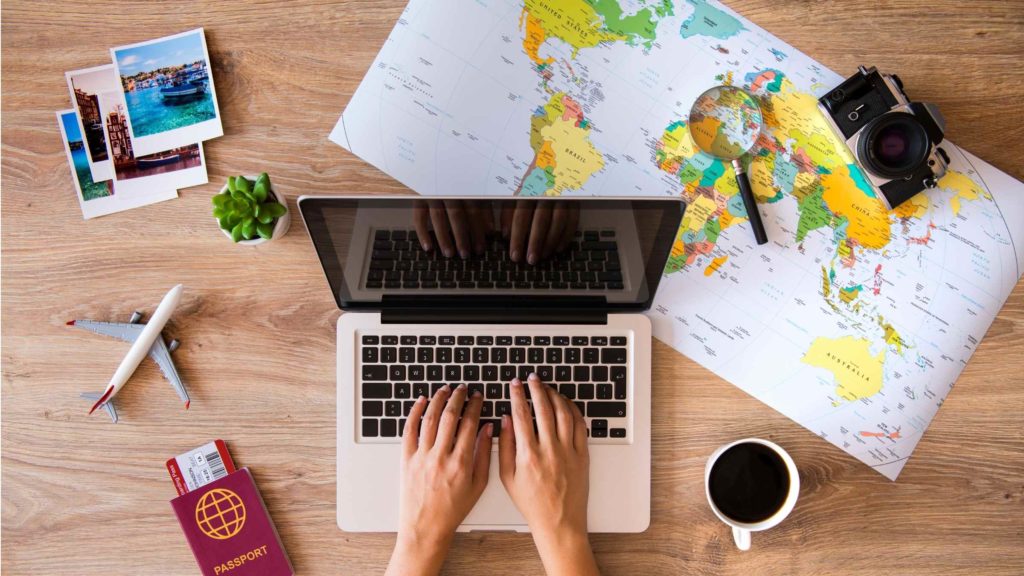
Recommended travel resources
Flights: To find flight deals, check out sites such as Skyscanner and Google Flights to compare flight costs and book.
Accommodation: I use Booking.com for hotel bookings as they have fantastic flexibility and cancellation.
Airport Parking and Lounges: With Holiday Extras, you can save money on airport and travel extras, including airport parking, airport hotels, and airport lounges.
Travel Insurance: I highly recommend you always get travel insurance – I use the Post Office Travel Insurance for single trip coverage and Safety Wing for comprehensive travel medical insurance.
Car Hire: I use Discover Cars to hire cars abroad as they have free cancellation, free mileage and no card fees.
Travel Money: I recommend Post Office Travel Money as you can get competitive rates and 0% commission for your holiday cash.
E-sim Cards: Use Airalo’s eSIM app to buy an eSIM for 200+ countries and stay connected when you travel abroad.
For more travel tools, head to my bumper travel resources page now!
Love this post? Why not pin it and share it?






